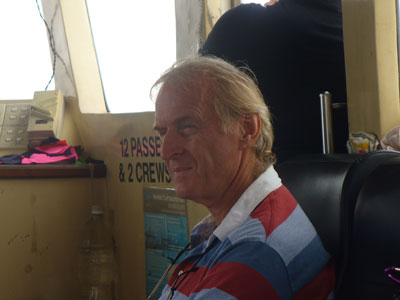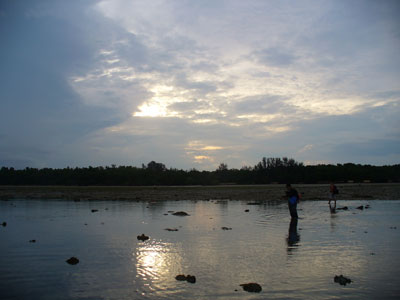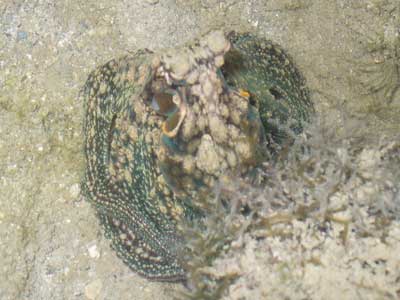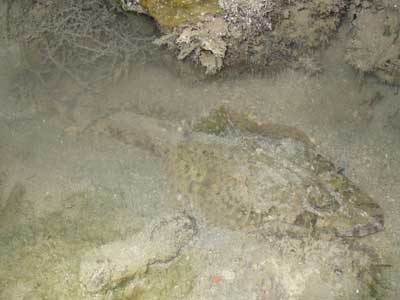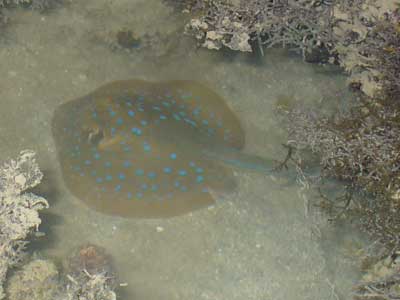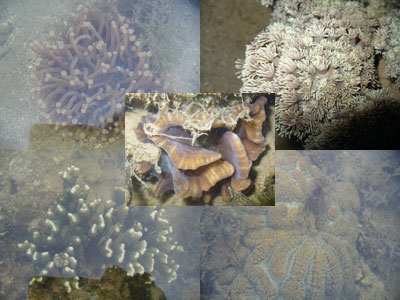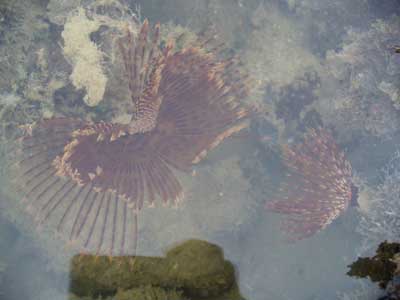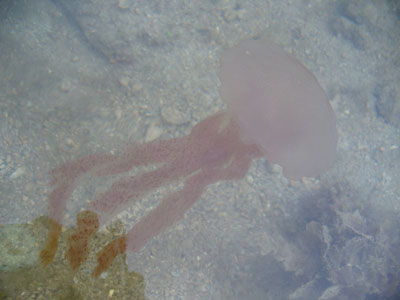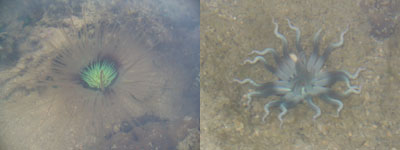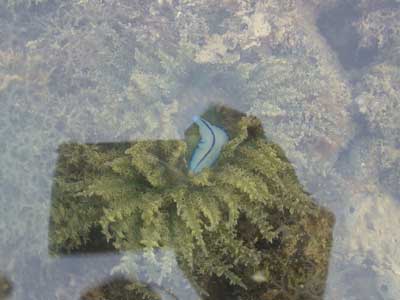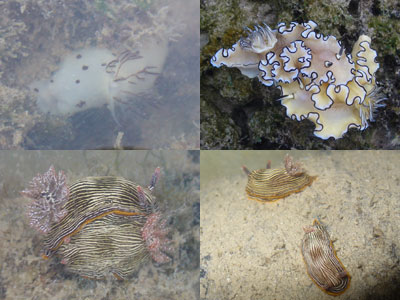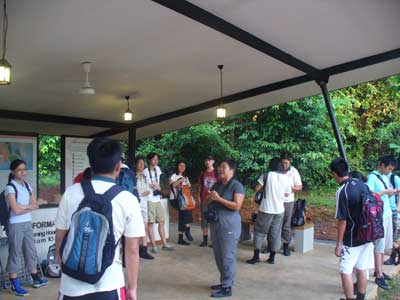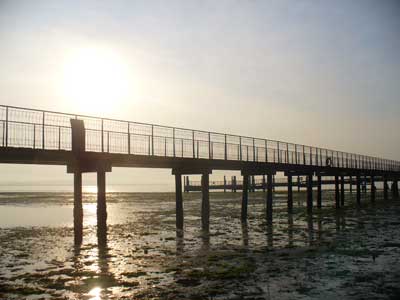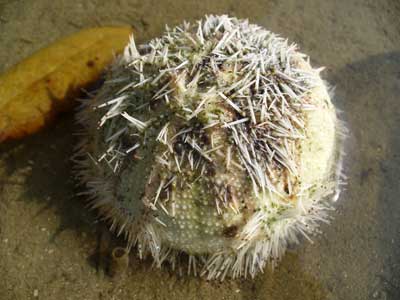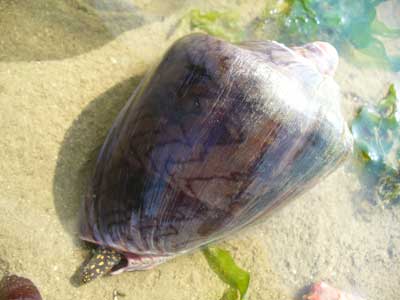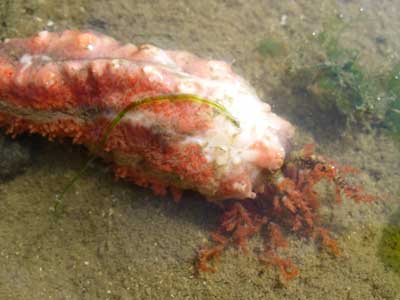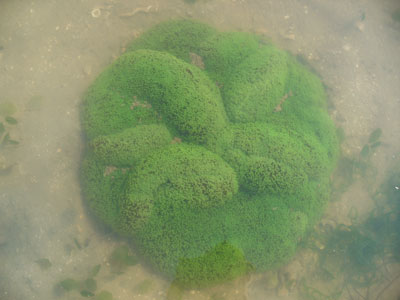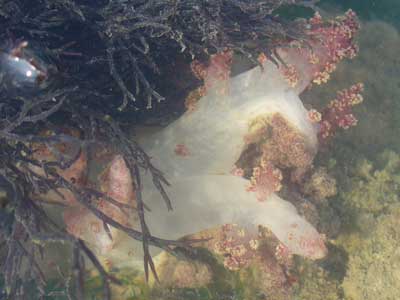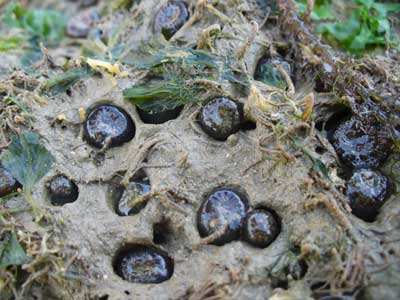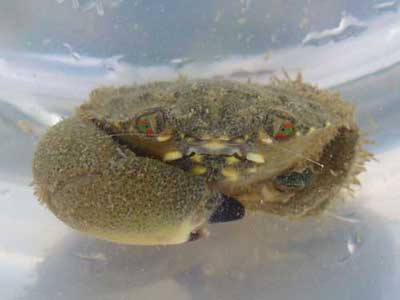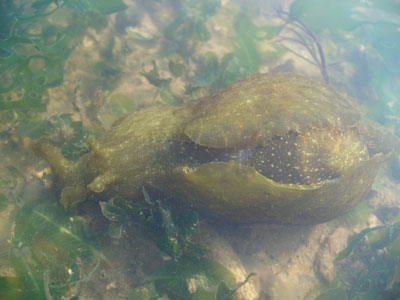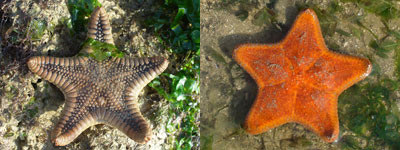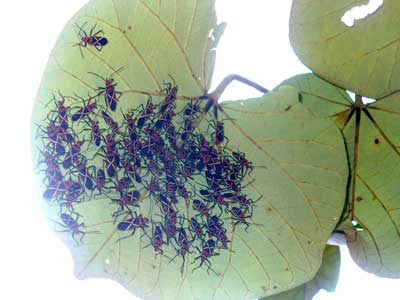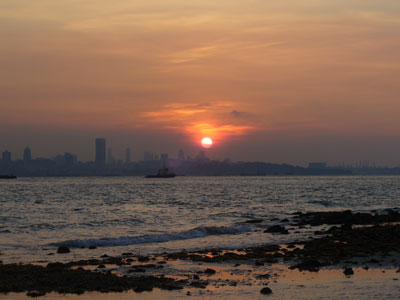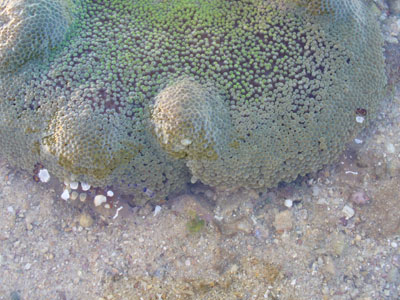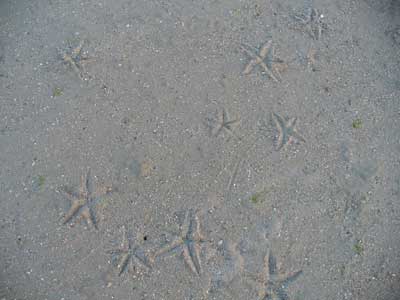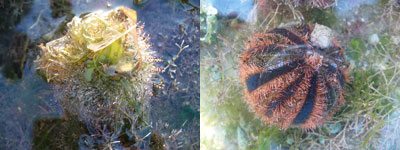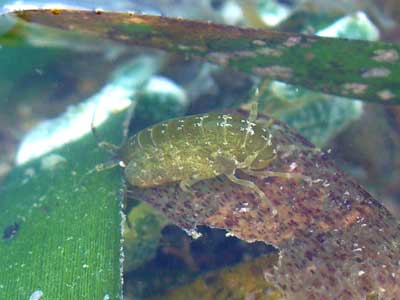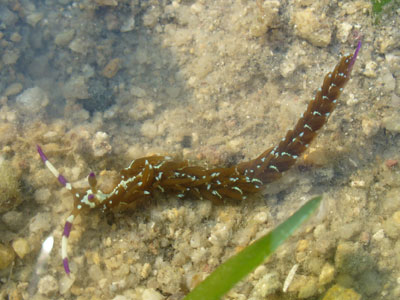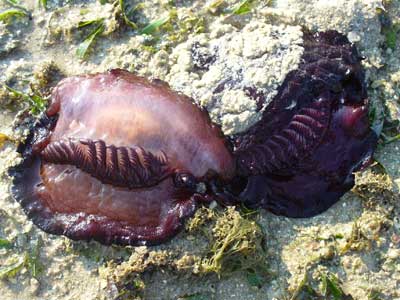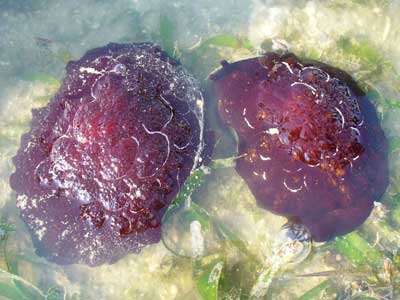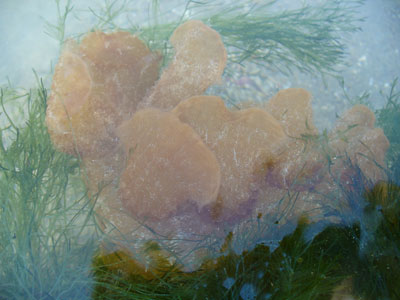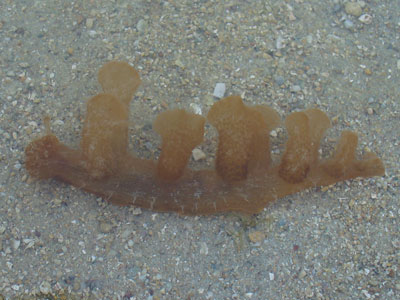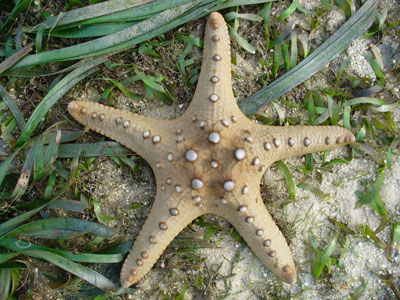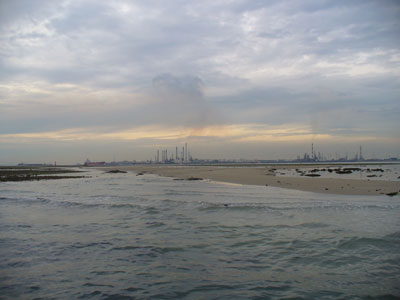
Comprises 3 patch reefs - Terumbu Pandan, Pandan Beacon and South Cyrene Beacon, Cyrene Reef is one of the largest patch reef systems in Singapore. Located to the south of mainland Singapore, it is smacked right in the middle of a shipping lane. Hundreds of ships transit the waters around the reef every day. The reef is also next to huge industrial sites like Jurong Island and Pulau Bukom. Despite all these, the biodiversity on Cyrene is amazing. So much so that certain fauna found here could possibly be found no where else.
Our main aim for today is echinoderms and nothing else. So this post will be solely focused on echinoderms.
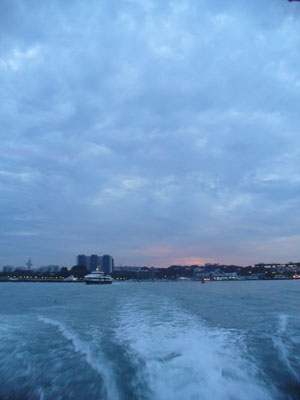
We set off just before sunrise on the 'Dolphin Explorer' managed by Melvin at the Singapore Yacht Club, and the scenery is beautiful as usual.
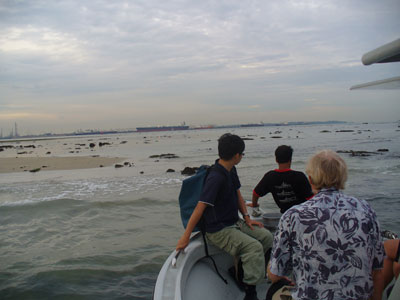
Approaching the reef, we transit to a smaller boat - 'Baby Dolphin Explorer' to land on the reef.
Once we set foot, no time was wasted and the search began, with a particular target in mind.
First critter of the echinoderm list - Sea Cucumbers. Not much, but still something.
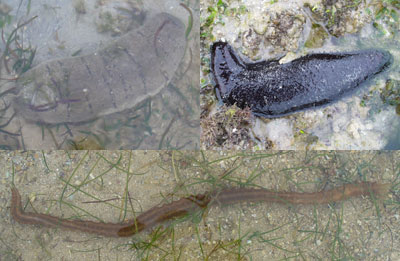
From top left, clockwise: Sandfish (Holothuria scabra), Black Sea Cucumber (Holothuria leucospilata), and Synaptid (Family Synaptidae)
Next - Sea urchin. Well I saw only two species. One of which is a Salmacis sp., but I forgot to snap its photo!!

This is the other. This most probably is a Diadema setosum, as noted by the distinct orange anal ring.
Next - Feather sea star. One and only one I saw...
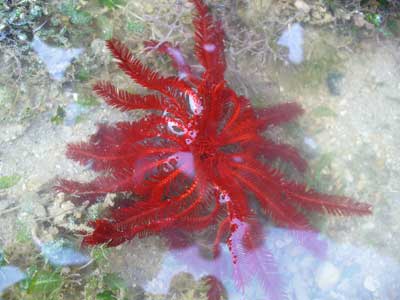
Feather stars, also known as crinoids (Class Crinoidea) are the most ancient of all echinoderms. They move by pulsating their 'feathers', but more often than not, they are directed by water currents. They have 'hooks' known as cirri, which they use to anchor themselves onto substrates.
Last but not the least - Sea stars!!
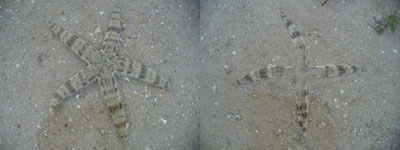
Common sea stars (Archaster typicus). They were abundant at a certain portion of the sandy area, and I meant really a lot... maneuvering around was difficult. The one on the right only has four arms, not that one was chomped off - it seems natural. I found two of this kind in total. Maybe five is a mess? Haha...
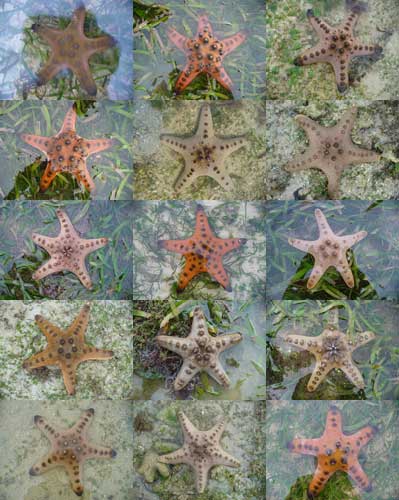
OMG!!! Not 1, not 2, but 15 Knobbly sea stars (Protoreaster nodusus)!!! Just by walking along my designated path together with some others, 15 individuals were easily found... I bet the others found many more!
However, the highlight of the trip must be this. It is THE ultimate aim of the trip.

Pentaceraster sp.!! This is not just another knobbly or a knobbly that has crossed over to the dark side. It is a new record of its type! Something new in our Singapore waters.
UPDATE: The sea star is now tentatively being identified as Pentaceraster mammillatus by Dr. David Lane. Its distribution is that of Indian Ocean, but apparently with its appearance in Singapore, it has expanded its range. It is usually found in lower eulittoral and deeper region, on sand and seagrasses. However, the taxonomy of this group has some uncertainties, with gradations between species, possible hybrids and a closely related form living in the Philippines region. Still it's an important find, indicating the cleanliness of our marine environment despite Singapore being one of the busiest port in the world.
The new find is the reason why Cyrene is so amazing. Should we preserve this patch of reef for our children to admire? Should we allow this amazing ecosystem and its rich biodiversity to continue its Nature course? Well, this is for you to decide!
Cyrene Blogging Carnival
Cyrene Carnival Edition 1
Cyrene facebook
